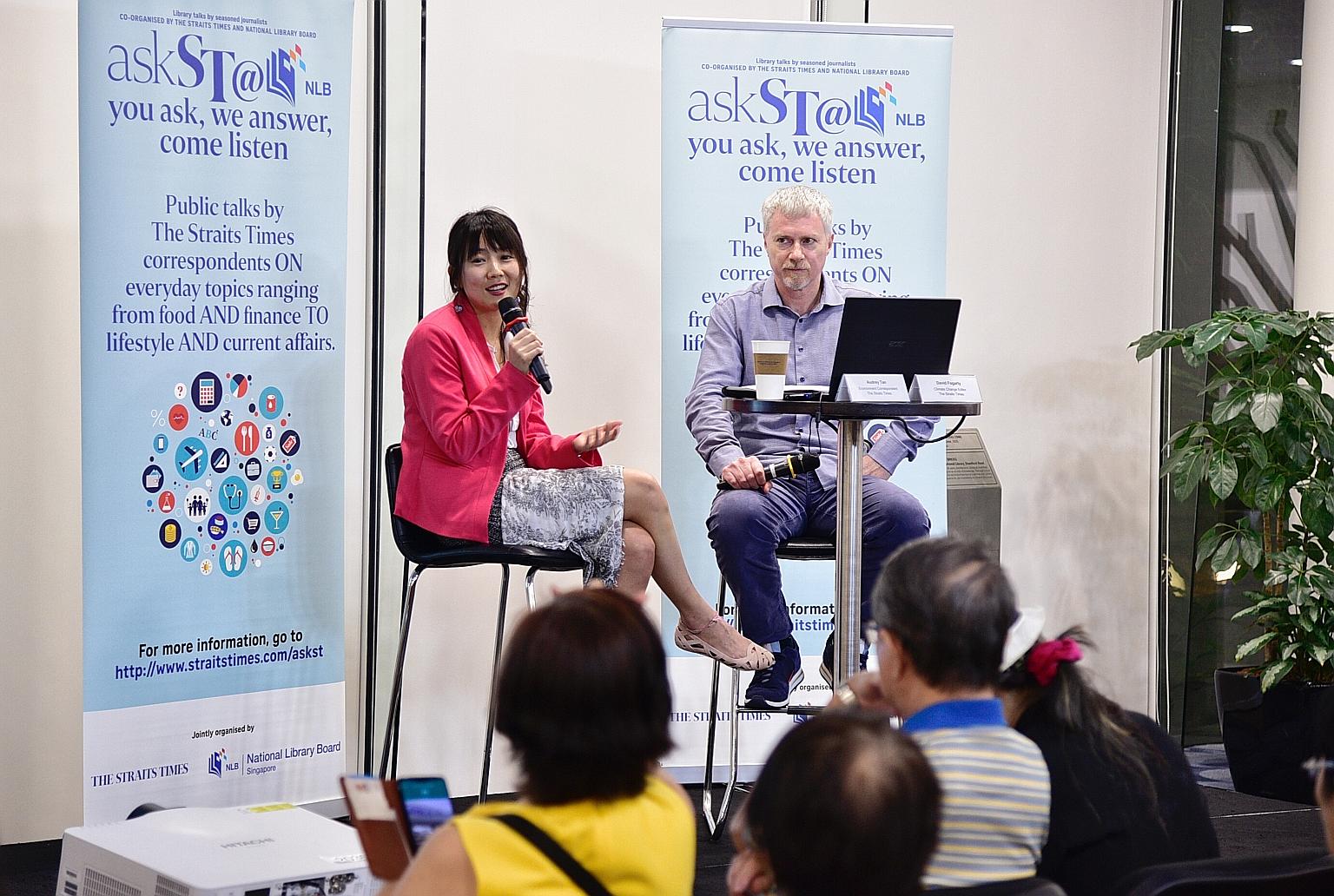How does climate change work? It's like adding layers of blankets
Sign up now: Get ST's newsletters delivered to your inbox

Straits Times environment correspondent Audrey Tan and climate change editor David Fogarty at the askST@NLB session last Friday.
ST PHOTO: DESMOND WEE
Follow topic:
Imagine that as you lie in bed, layer upon layer of blankets are thrown over you, turning up the heat.
That is how climate change works, said Mr David Fogarty, climate change editor of The Straits Times, explaining how mankind is causing the global phenomenon.
"What we are doing is changing the natural cycles by adding heat to the atmosphere, by adding greenhouse gases that kind of act like a blanket," he said.
"Imagine if you are feeling a bit cold in bed and you add blankets. You add a few more and you add a few more, you are going to feel warm. That is kind of what is happening to the planet."
The heating up of the planet has played a significant role in causing recent problematic weather events, said Straits Times environment correspondent Audrey Tan.
These include the heatwaves in Europe in the summer and the devastating Typhoon Hagibis, which slammed Japan earlier this month and killed over 80 people.
Ms Tan and Mr Fogarty were speaking to about 140 people last Friday on climate change and its relevance for Singapore.
The talk at the Central Public Library, part of the askST@NLB sessions, was organised by The Straits Times and the National Library Board (NLB). The sessions are streamed live on The Straits Times' Facebook page.
At the 90-minute session last Friday, the pair explained why Singaporeans need to care about recent scientific reports by the United Nations' Intergovernmental Panel on Climate Change, which outlined the severe impact of climate change.
The first report, published in October last year, looked at the impact of warming of 1.5 deg C versus 2 deg C, and showed that even small increases in temperature can make a huge difference to crop production, sea-level rise and damage to coral reefs.
The second report, released in August, exposed how food production is wasteful and destructive and is a huge producer of greenhouse gas emissions, and how changes in diets can make a big difference.
The last report on oceans and the ice-covered parts of the planet, published last month, revealed the enormous threat from the faster melting of ice caps and glaciers to people living along coastlines and on low-lying islands.
Ms Tan said the increasing emission of carbon dioxide is a problem for every country, including Singapore, to tackle because any emission has a global impact that affects the planet.
Carbon dioxide, emitted when people burn fossil fuels or clear forests, is a greenhouse gas which traps heat on the planet. She said: "One unit of carbon dioxide emitted in Singapore has the same effect as a unit of carbon dioxide emitted anywhere else in the world."
Everyone has a part to play to combat climate change and reduce the emission of these gases, said Mr Fogarty.
Burning fossil fuels is the main source of such gases, he added, and everyone needs to take action to stop global warming.
"Everyone in this room is to blame. Many people think that climate change has got nothing to do with them, that they live simple lives... we all play our part, some more than others," he said.
Retiree Raymond Tan, 68, who attended the past four askST@ NLB sessions, said he enjoyed them as they have allowed him to learn more about the issues which he has read about in ST.
"I read The Straits Times to keep current and stay aware of what is going on around the world. These sessions allow me to understand the issues even more," he said.
"Climate change is a very worrying problem and it was good to hear from the perspective of journalists who report on the issue."
The next askST@NLB will be held on Nov 21.

